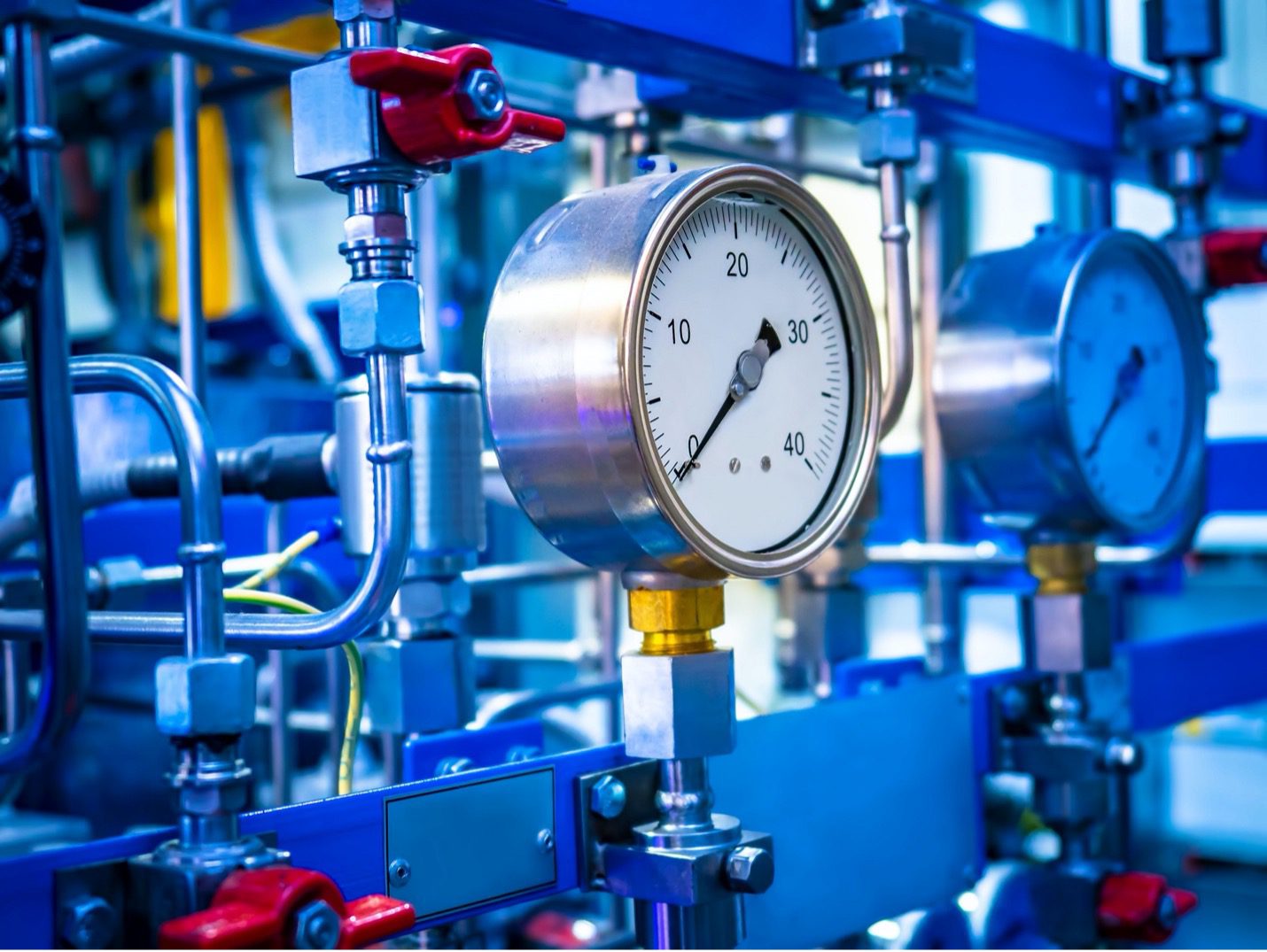
To understand what may be wrong with a pressure gauge or to determine the pressure gauge accuracy, it is important to understand how a pressure gauge works.
The fundamental workings of a pressure gauge are based on Hooke’s law. In basic terms, this law states that the amount of force applied to the spring is equal to the amount of resistance from the spring. In other words, if you pull on a spring, it will pull back with equal force. And, if you push on a spring, it will push back with equal force. However, if no force is applied to the spring, no resistance will be applied by the spring.
A pressure gauge may be faulty for a variety of reasons:
- Clogging
- Extreme pressure
- Mechanical vibration
- Overpressure
- Pressure spikes
- Pulsation
What is pressure calibration
Pressure calibration is the process of comparing the output of a device used to measure pressure with the pressure output of a standard pressure measurement device, or a pressure measurement standard.
The aim is to determine what the common pressure measurement is in the measurement circuit between these devices. Each device’s pressure output is compared to the other at different pressures. Typically, measurements are performed at various readings of the DUT’s full-scale range.
The goal of the process is to ensure pressure measurement accuracy as well as to ensure that the pressure measurement device complies with mandated or accepted standards.
How often should pressure calibration be performed
Pressure calibration will depend on how often the device is being used. Generally, calibrations may occur on a monthly, quarterly, or semi-annual basis.
In cases where critical pressure measurements are performed often, it may be better to calibrate at shorter intervals. This will yield less questionable measurement results. However, other factors may come into play, such as safety regulations, industry standards, or the performance of the pressure gauge.
Calibration may be performed using a circuit with known readings, a checkbox, or a proprietary calibration card.
Calibration may be performed:
- Before a major critical measurement project is performed
- After a major critical measurement project was performed
- At the manufacturer’s pressure measurement intervals
- As per the requirements of the job (some projects may require calibration before measurement)
- Monthly, quarterly, semi-annually, annually
Tips for checking the accuracy of the pressure gauge
- One of the most important factors to determine is the accuracy class of the calibrated pressure gauge before a comparison can be done.
- Always select the appropriate pressure medium for calibration and keep in mind that the pressure range will affect this selection.
- Ensure that the pressure medium that is being used is not contaminated. Dirt is the most common form of contamination and may affect results.
- Leak tests, before calibration, ensure that no errors will occur during calibration.
- A pressure gauge should be calibrated in the same position it is being used to measure pressure. This is because the position of the gauge will affect the reading received. In addition, the height difference between the device being calibrated and the testing device should be noted as these affect the reading as well.
Mid-West Instrument
Since 1958, Mid-West Instrument has been a leading global manufacturer of differential pressure gauges, transmitters, and switches. Our company is family owned and operated from our facility located in Sterling Heights, MI.
Our state of the art factory is equipped the latest CNC machine tool technology, test equipment, calibrations standards, and oxygen clean room. This allows us to maintain precise tolerances and product quality with the shortest lead times in the industry.
Contact our experienced professionals to learn which differential pressure instrument best fits your application.

